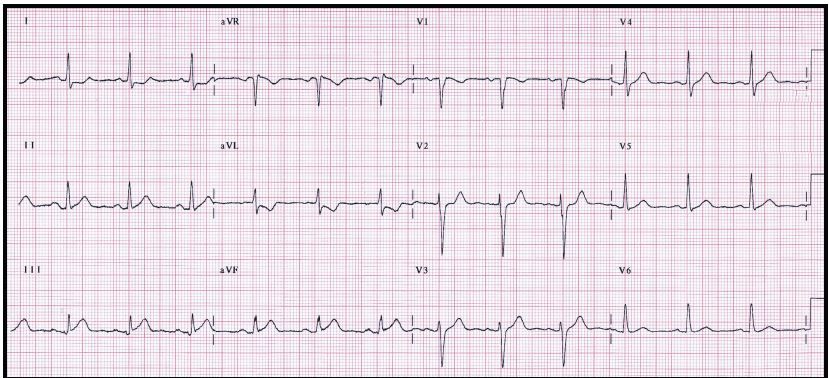- Clinical Technology
- Adult Immunization
- Hepatology
- Pediatric Immunization
- Screening
- Psychiatry
- Allergy
- Women's Health
- Cardiology
- Pediatrics
- Dermatology
- Endocrinology
- Pain Management
- Gastroenterology
- Infectious Disease
- Obesity Medicine
- Rheumatology
- Nephrology
- Neurology
- Pulmonology
Subtle ST-Segment Elevation in Inferior Leads: Is This an Infarction?
A middle-aged woman presents to the ED complaining of chest pain, dyspnea, and emesis. Here, review results of a 12-lead ECG. How would you confirm a diagnosis of STEMI?
Figure 1.

A 57-year-old woman with a history of hypertension, diabetes mellitus, and angina presented to the emergency department with chest pain. She noted the onset of the pain approximately 2 hours before arrival at the ED; the pain was associated with dyspnea, emesis, and diaphoresis.
On examination, she was alert and oriented and in significant distress; significant diaphoresis was noted. Vital signs were: blood pressure, 105/64 mm Hg; pulse, approximately 70 beats/min; respiratory rate, 24 breaths/min; temperature of 37.4°C (99°F); and oxygen saturation, 92% on room air. The examination was otherwise normal. Results of a 12-lead ECG are seen in Figure 1 (click to enlarge).
Which ECG diagnostic tool or finding is most appropriate to confirm the diagnosis of STEMI in this patient?
A. Serial ECG analysis
B. Additional ECG leads
C. ST-segment trend monitoring
D. Reciprocal change
Please leave your answer/comments below.
For answer and discussion, click here.
